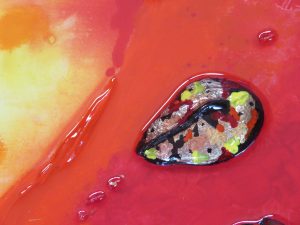How to Balance Studio Time with Work, Life or Business
Category : Arts

Everyone is on the bandwagon when it comes to balance – and why not? We all want to do well at work or in our business, plus have a social life, recreation and time with family. We need to learn studio time as well. Finding balance isn’t always such an easy task.
For artists, finding a balance between work, social life, recreation and studio time is just as difficult. One is constantly shifting gears and the challenge isn’t just about time but the mental shifting of gears. Some never achieve it, others give the illusion of balance and yes, a few of us actually achieve it. I would like to consider myself in the last group. I run three businesses (business coaching, art and writing) and have other interests, social activities, involved in a number of Boards and Committees and yes – I do sleep!
Let me share my tips and tricks on how I achieve so much whilst not burning the candle at both ends.
How to balance studio time
Have production goals
As a business coach, I am always talking to business owners about goal setting and for an artist, it’s a little different. You should have clear goals when it comes to your art business. How many pieces do you want to produce per quarter? How many competitions do you want to enter? How many exhibitions do you want to be involved in per year? How many pieces do you want to sell a year? If you are running classes, how many a month and how many people per class or group? Know your objectives and have those goals written down. The next step is then working through the action steps to achieve those goals.
Set a Time & Get a Routine
Make a regular routine of all your responsibilities for the day and strictly follow them. Make sure that your whole family is aware of the schedule so they can tag on the consistency of your routines. Some artists choose to rise up early so they have time to start working on their pieces early whilst fresh. Each person is different; if you are an experienced artist, you will know your productive times. Set aside days or times of the day to work on your art and diarise that time so that it doesn’t get bumped. Ensure before you start that you have had breakfast or lunch, have had your coffee and are ready to start work. Think of your art as work (nice work) and your attitude is likely to be more professional rather than hobbyist or relaxed.
Create a Space
Get your own space and claim it. Have a separate studio area that your family cannot intrude easily. For this reason, using the dining table as your studio is often not productive for the serious artist. You can also rent a space far from your house so that you will not have the distractions that can pull you off target. Have your equipment organised, ready and at hand so there is no excuse to not get started. Often, transitioning to the creative side can be done with ‘props’ to give yourself mental signals. Put on music, light a scented candle, even putting on your paint shirt – these are all little routines which tell us it’s time to be the artist. It’s a little bit like when I put on my walking shoes to walk the dog – he knows it’s walkies time when those joggers come out – woo hoo!
Kill the Interruptions
Be sure to turn off your phone or devices during studio time. You may even choose to not answer the door or to let family and friends know you work mornings, so drop-ins are best for the afternoon. Work out where the interruptions come from and then strategise to remove them. To me, art (like writing) requires a quiet and peaceful environment. Music that motivates and sets the mood often certainly helps me get into ‘the zone’ creatively.
Work Smart – Not Hard
Ensure that the hours you spent for your studio are resulting to good production; otherwise you likely just ‘tinker around’ and waste valuable time. If you are a hobby artist and have no deadlines or set goals, then tinker away if that is what gives you joy. Because I work in multi-media (including watercolours) I have ‘wait for it to dry’ periods, so I often work on 3 pieces at a time. Whilst one is drying, I’m working on another. I know not every artist likes to jump from piece to piece, so if that doesn’t work for you, alternatively consider shorter blocks of time. Remember also to take breaks and walk away – no different from work. Clear your head, stretch your legs, move your hands around – go to the bathroom, grab a water or coffee or take a walk. A refreshed mind and body is more productive.
Avoid Stress
If you do have a deadline such as a gallery opening, then be sure to plan your time accordingly. No different from any project, allow buffer time and time for things to ‘go wrong’ or for unexpected things to occur (life is full of surprises which are not always wonderful). Ensure you start in plenty of time, achieve your daily/weekly goals and stay on task with time allowance at the end to use if needed. Identify your stress triggers and remove them wherever possible.
Network with your peers
Engage and chat with your peers. Possibly you are having a problem with a medium or just feeling a little isolated – so why not chat with other artists. Attend events and make the effort to connect. I recently attended a workshop – not because I wanted to learn a new technique, but purely for the relaxation and fun of the night. I got together with some friends, we had a couple of wines and just chatted whilst trying a few new techniques. I thoroughly enjoyed it!
My final comment is to review your situation. Are you happy in what you are doing and mostly enjoy every day? If not, change what is not working for you. It’s your life and most of the time, the only person who can change what is happening in your life – is YOU. To me, art is pleasure – may it bring you pleasure also.
If you need coaching tips, visit http://www.donna-stone.com.au. My art website is https://www.artwork2love.com and check out my pieces.
Read How to Improve Productivity in the Workplace with Art, Plants and Music.
